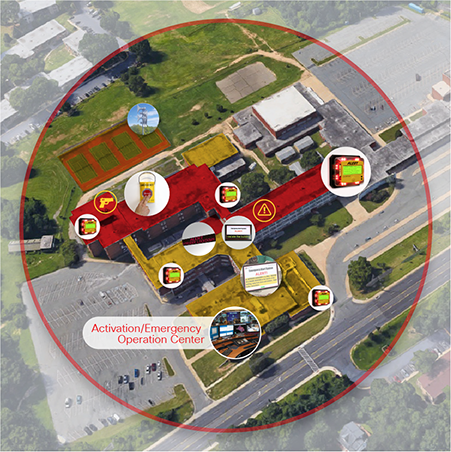Five Emergency Notification Tips for Effective Crisis Communication in Government Facilities
By Kat Wilkerson, Senior Content Marketing Specialist
It is critical to disseminate information promptly and reliably during an emergency.
Communication can be challenging in government facilities, as they operate in secure environments that can limit some emergency communication methods due to access control, encrypted files, and strict phone and email policies. These limitations are where Emergency Notification Systems (ENS)—often called Mass Notification Systems (MNS)—can help improve crisis communication in your government facility.
As we enter the election season, there are a handful of emergency communication solutions that government agencies and facilities should consider implementing.
1. Notification Templates
Proper emergency preparedness means planning for any potential threat. Government organizations can immediately improve their preparedness and response times by creating and deploying prewritten, actionable alerts through their Alertus emergency notification system.
2. Facility-Based Notification
Secure government environments like courthouses face unique challenges during an emergency. Courtrooms typically do not grant those within the room access to their cell phones, making it challenging to receive vital information regarding an emergency outside the courtroom doors.
A facility-based ENS can ensure you reach everyone with critical information when a crisis occurs. By integrating existing infrastructure and technology, you can create a simple, single-point activation for all solutions, including:
3. Audience Targeting
Targeting specific departments or groups in your building is extremely important when sending messages to your organization. Only some emergencies will affect the entire building, and zoneable devices will decrease disruption, giving safety officials the option of notifying specific areas, facilities, or corridors of an emergency.
Alertus offers various ways to segment audiences to notify the impacted personnel, including:
Geo-targeted alerts with an interactive map interface
User-based alerting with active directory or LDAP integration
Subscribed lists for Alertus’ personal notification app, AlertAware
Grouping by buildings or functional areas
4. Audible and Visual Notification
Ensuring your government building can accommodate individuals with disabilities is critical in enhancing your notification reach and effectiveness.
Sending notifications over a public address (PA) system is one of the most common, fastest, and most effective means of getting your information out to large areas. However, it doesn’t account for individuals who may be deaf or hard of hearing.
Implementing an ENS that is compliant with mass notification codes and mandates and delivers both audible and visual notifications ensures government facilities can:
Reach individuals with either auditory or visual impairments
Facilitate notifications throughout buildings without an existing PA system
Send alerts to buildings without 24/7 staffing for consistent oversight
Protect individuals within secure environments with cellular dead zones
Utilizing solutions such as Alertus’ Text-to-Speech (TTS) Interface, Alert Beacon®, and LED Marquee increases the chances that your emergency alert will reach everyone.
5. Secure Alerting Methods
The Alertus System provides a secure, on-premise mass notification solution that utilizes multiple layers of alerting modalities. It is certified against Federal IT security guidelines and constructed for Sensitive Compartmented Information Facility (SCIF) environments.
In the case of a lockdown, Alertus’ integration with third-party access control systems allows for data exchange between building access controls and a mass notification system, creating a more secure, efficient, and manageable environment for individuals responsible for building security and emergency communications.








